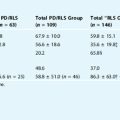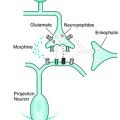Chapter 38 History of the Restless Legs Syndrome Foundation
Never doubt that a group of thoughtful committed citizens can change the world; indeed, it’s the only thing that ever has.
In the 1940s, a Swedish neurologist named Karl Axel Ekbom began publishing numerous scientific articles on restless legs syndrome (RLS), coining that name in 1945.1 But persons with RLS continued to suffer alone, for the condition was little known and rarely mentioned. Their only opportunity to connect with other patients was through the National Organization of Rare Disorders (NORD), where individuals with rare conditions turned to learn more about their disorder and to connect with others through a patient database.
From the beginning, everyone involved with the RLSF focused on reaching out to others with the condition and educating physicians. RLSF’s early goals, as stated in its first published brochure in 1993, were to
Patient Education
Patients also have the opportunity to attend the RLSF’s regional meetings held at a different location around the United States each year. These meetings feature a variety of speakers and sessions and allow those who have RLS to receive education about current RLS therapies and research, as well as helping them to not feel alone.
Awareness
Kate Styer is one of many people who found help on the RLS website (www.rls.org) when her symptoms started keeping her awake. “I would go for hours and hours moving my legs, or tensing them up so that I could get some relief. This period of sleepless nights was so frustrating.” Then Kate overheard a family member talking about “restless legs syndrome.” “She described my situation to a tee. I almost jumped up and down with glee. When we returned home, I got online and Googled ‘Restless Legs Syndrome.’ I read the RLSF site with my jaw hanging open.”
When redesigning the website in March 2004, the goal was to communicate important information about RLS in an appealing and reader-friendly format so visitors could maneuver easily through the pages. Enhancements included more communication tools for users, easier access to publications, enhanced features to help visitors find a support group or local RLS health care provider, information in other languages, and an improved system for making donations and renewing memberships. The newly designed site definitely accomplished these goals. After the improvements, the site saw 2 million more hits than it had the previous quarter.
A third avenue of RLS is through media outlets. RLS has been featured in various national publications, and each time, it becomes increasingly evident how many people are living with RLS. A prime example of this was a column featured in “Dear Abby.” A reader wrote in to discuss her husband’s “restless legs.” His constant movement was keeping her awake and causing her to consider moving to a different bed. Abby’s response included listing the possible cause of his syndrome as “restless legs syndrome.” She also listed www.rls.org as a source for information. The RLSF’s website had been averaging about 2000 visitors a day, but on October 2, the day the column ran, the site had more than 15,000 visitors! The monthly total was nearly triple that for September of previous years.





